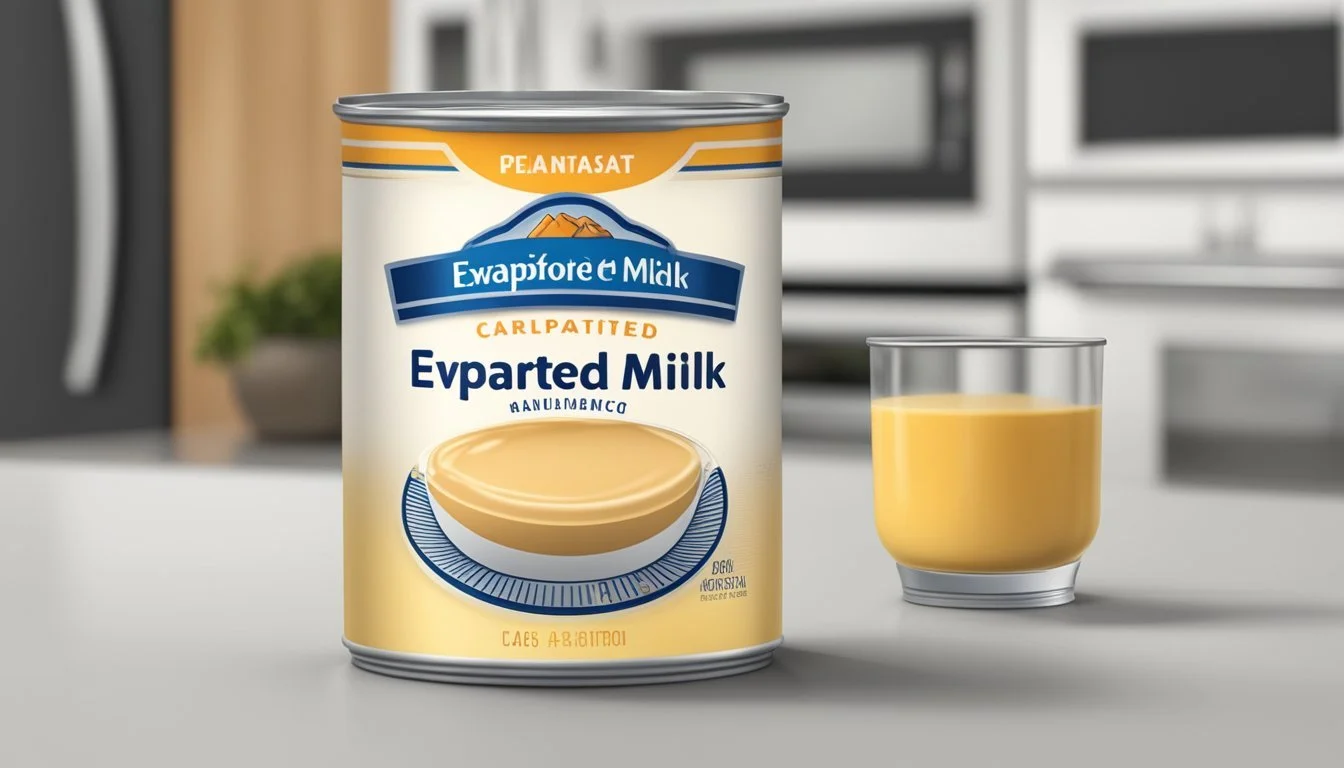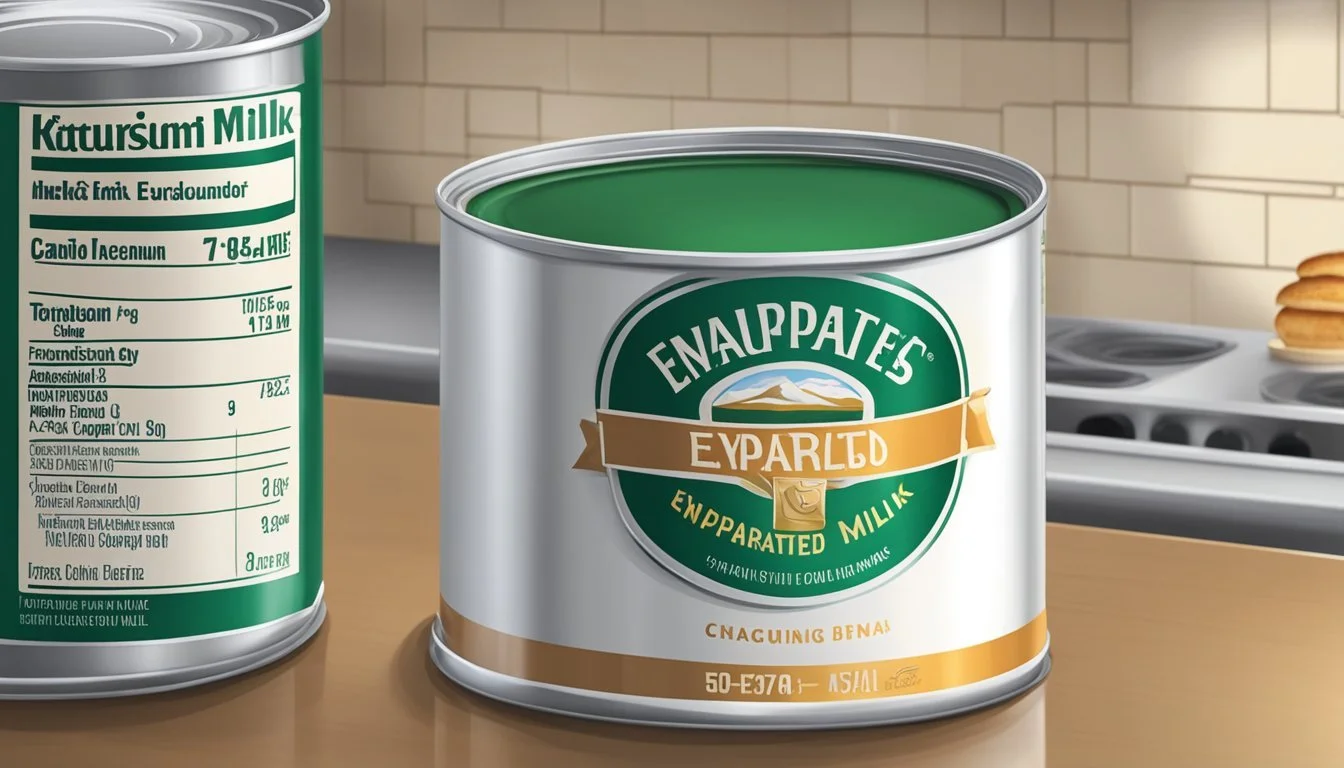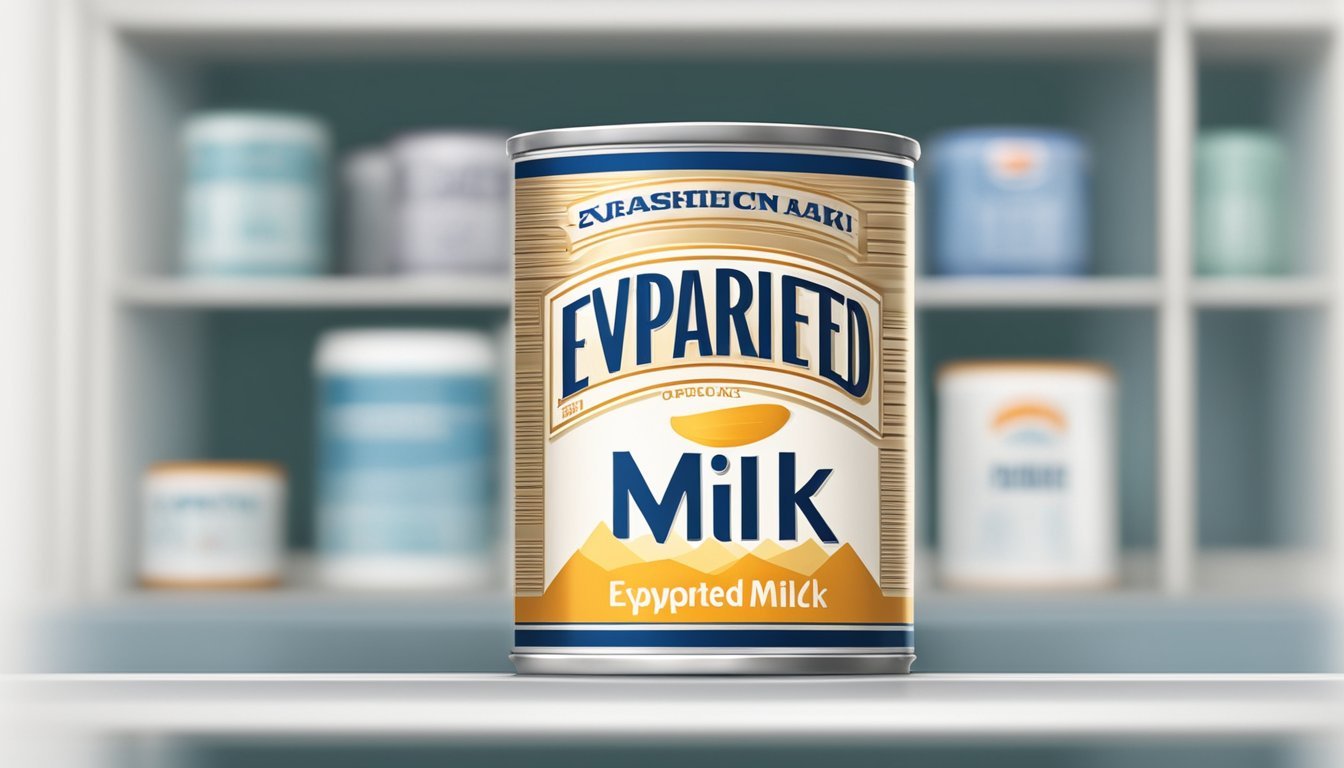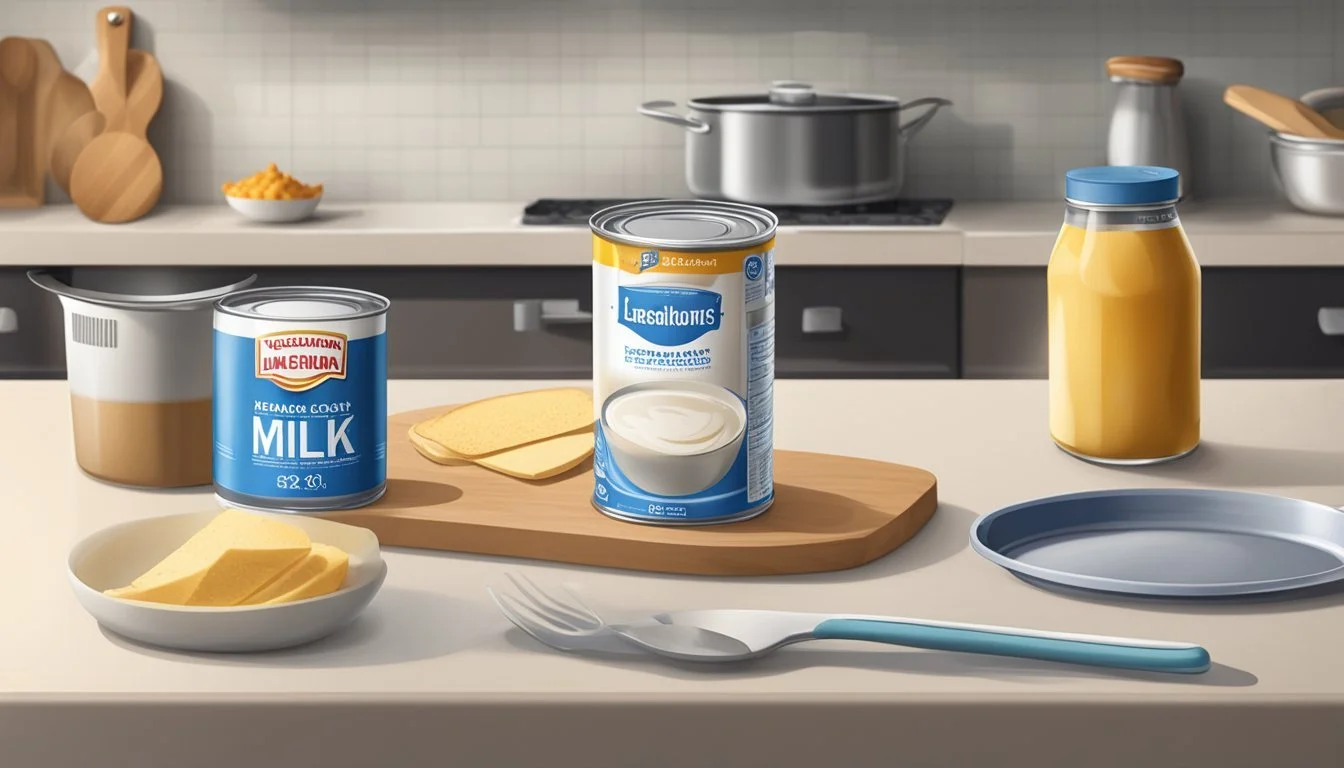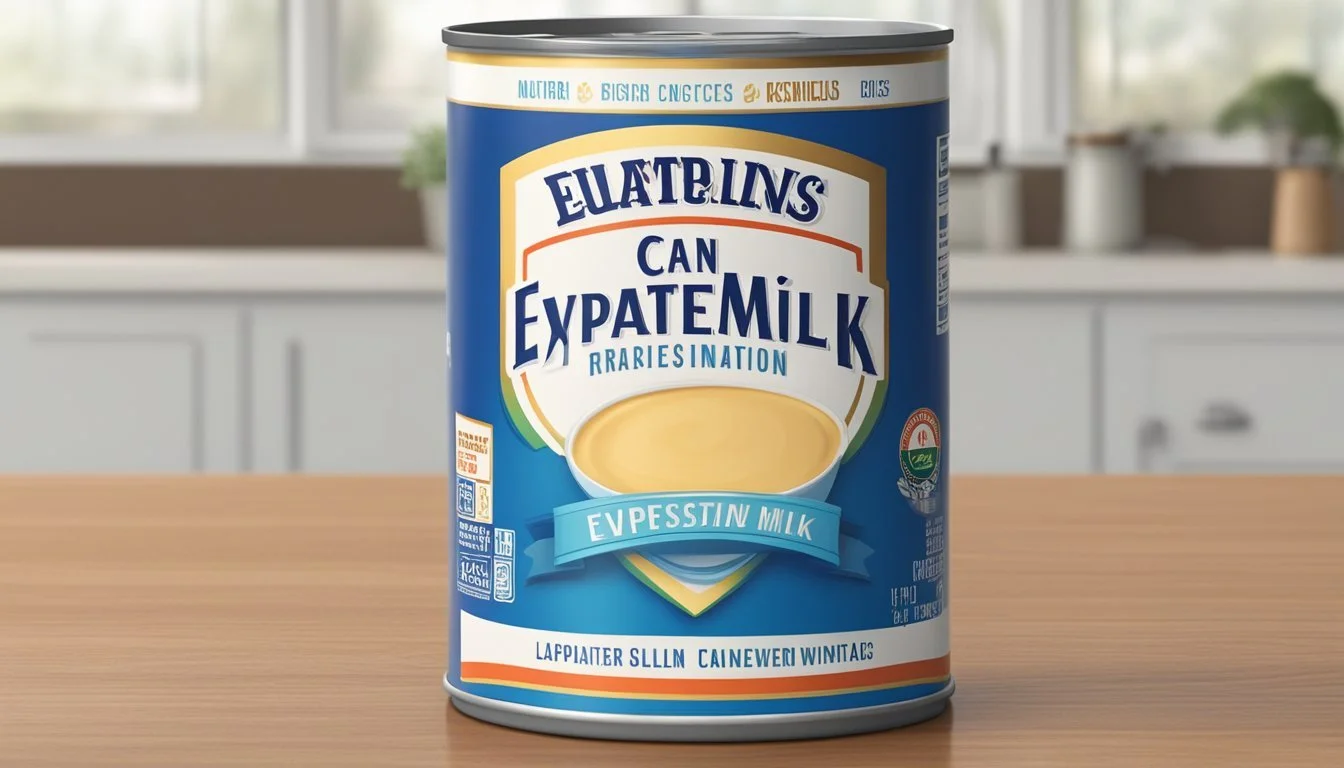How Many Ounces in a Can of Evaporated Milk?
Understanding Can Sizes and Measurements
Evaporated milk is a dairy product with around 60% of the water content removed, leaving behind a denser, creamier liquid. It is commonly packaged in cans, making it a convenient and shelf-stable ingredient for many recipes. This canned milk can be found in various sizes, but the small can typically holds 5 ounces of evaporated milk. Its presence in the pantry is essential for both sweet and savory dishes, allowing for a rich flavor and texture that fresh milk cannot always provide.
The standard can size of evaporated milk, which is often used in recipes, contains 12 fluid ounces. However, evaporated milk can also be found in other sizes including the aforementioned smaller 5-ounce can and less commonly, a larger 14 1/2 ounce can too. It’s an ingredient found in many kitchens due to its versatility and extended shelf life, making it a reliable canned good for those times when fresh milk might not be readily available.
When cooking or baking, understanding the can size and corresponding volume of evaporated milk is crucial for the precise execution of a recipe. As it is concentrated, bakers and cooks often use it in a diluted form, combining it with an equal amount of water to substitute for regular milk. Yet, when used in its concentrated form, it imparts a richness that enhances the flavor profile of the final dish, whether it’s a creamy soup or a decadent dessert.
Understanding Evaporated Milk
Evaporated milk, a canned milk product reduced in water content, is a staple in many kitchens due to its rich and creamy nature, perfect for enhancing various recipes.
Definition and Description
Evaporated milk is obtained by removing roughly 60% of water from fresh milk through a gentle heating process, which concentrates the liquid. This results in a creamy texture and a sweet taste, making it a versatile ingredient. The canning process preserves the milk, allowing it to be stored for an extended period without refrigeration until opened. Available typically in 12-ounce cans, evaporated milk can be a convenient component in cooking and baking.
Comparison with Condensed Milk
While both evaporated milk and sweetened condensed milk undergo a process to remove water, the key difference lies in the added sugar. Sweetened condensed milk has sugar added, which not only sweetens the product but also contributes to a longer shelf life. Evaporated milk, on the other hand, is unsweetened, retaining the natural sugars found in milk, known as lactose. This distinction is crucial when selecting the appropriate canned milk product for a recipe, as their uses and outcomes in dishes differ significantly.
Evaporated Milk Sweetened Condensed Milk Unsweetened Sweetened with added sugar 60% water removed 60% water removed Rich and less sweet Very sweet and rich Used in both sweet and savory recipes Primarily used in desserts and sweet dishes
Nutritional Information
A standard 12-ounce can of evaporated milk provides a concentrated source of nutrients found in milk, including protein, fat content, and lactose. Due to the reduced water content, these nutrients are present in higher proportions than in regular milk, offering increased richness and mouthfeel to dishes. When considering nutritional aspects, it is important to account for the higher concentration of calories and macronutrients in evaporated milk compared to its non-concentrated counterpart.
Practical Information
When recipes call for evaporated milk, knowing the exact measurements and how to use it effectively in cooking is essential. This condensed milk product is a staple for adding a creamy texture to various dishes.
Common Uses in Cooking
Evaporated milk is prized for its ability to add creamy consistency without added water, making it a common ingredient for home cooks and professional chefs alike. It's often used in:
Creamy soups and chowders: To provide a rich base.
Sauces: For a smooth and velvety texture.
Baking: Essential in making desserts like pumpkin pie and custards.
Savory dishes: Such as macaroni and cheese, where it imparts creaminess without diluting flavor.
Smoothies and oatmeal: For a richer taste and texture.
Measurement and Substitutions
Evaporated milk comes in cans and is measured in fluid ounces. A standard can contains 12 ounces, while a small one holds 5 ounces. For culinary purposes, these measurements can be significant:
Can Size (oz) Equivalent (cups) 5 5/8 12 1 1/2
Should cooks not have evaporated milk on hand, they can make an alternative. To reconstitute it to the consistency of regular homogenized milk, mix the evaporated milk with an equal amount of water. If a recipe requires cream, they can use evaporated milk in the same measurement for a lighter option. Heavy cream can also be substituted for evaporated milk in a 1:1 ratio to maintain richness in the dish.
Packaging and Storage
Evaporated milk comes in various can sizes and has specific storage guidelines to maintain its quality and extend shelf life. Proper storage is crucial, whether in a pantry or a cool environment, to ensure that this pantry staple retains its rich, creamy texture.
Can Sizes and Labels
Small Can: Typically holds 5 ounces of evaporated milk; labeled as #1 or #1 tall.
Regular Can: Contains about 12 ounces, equivalent to #300 or 14 to 16 ounces; also referred to as #1 square or #303 which holds 16 to 17 ounces.
Large Can: Ranges from 22 ounces (#2) to 31 ounces (#2.5), and up to 56 ounces (#5) or more for commercial use.
Bulk Can: Known as #10, can hold approximately 96 ounces for food service or bulk purchases.
Shelf Life and Preservation
Unopened Can: An unopened can of evaporated milk can last for 12 to 18 months past the date of manufacture when stored in a cool, dry pantry.
Storage Tips: To preserve quality, evaporated milk should be kept away from light, air, and heat. A vacuum-sealed unopened can stored in a pantry can ensure maximum shelf life.
After Opening: Once opened, evaporated milk should be transferred to a non-metal container, refrigerated, and used within 5 days; it should not be frozen as it can affect the texture and taste.
Culinary Inspiration
Evaporated milk, with its rich and creamy texture, offers home chefs a versatile ingredient that elevates both sweet and savory dishes. It brings a decadent quality to recipes, ranging from desserts to main courses, infusing them with a depth of flavor that is hard to replicate with other dairy products.
Recipes and Variations
When it comes to using evaporated milk, recipes abound. Here are a few ideas:
Desserts: It's a cornerstone for delights such as pumpkin pie and ice cream.
Savory Dishes: For a creamy twist, add it to mac and cheese or custards.
Coffee/Tea: A splash can transform a simple cup of tea or coffee into a creamy, indulgent beverage.
Frozen Desserts: It can be used in frozen desserts to provide a creamier texture without the need for an ice cream maker.
Flavor Pairings and Enhancements
Evaporated milk's flavor profile allows it to pair well with a variety of ingredients:
Sweet: Enhances the sweet taste of desserts and baked goods.
Savory: Complements savory dishes with its rich, unctuous quality.
Coconut: Can be a great partner to coconut in tropical desserts or Asian cuisine for a lush, creamy taste.
Tea/Coffee: A touch of evaporated milk can offer a comforting richness, enhancing these beverages substantially.
Remember, the key to using evaporated milk is to embrace its unique properties to enrich the taste and texture of your culinary creations.
Consumer Considerations
When selecting canned evaporated milk, consumers often weigh dietary needs and economic factors to make a practical choice that fits their lifestyle.
Dietary Restrictions and Allergies
Evaporated milk is concentrated milk from which about 60% of the water has been removed. Those with lactose intolerance should be aware that evaporated milk contains lactose, just like regular milk. For recipes or diets requiring dairy-free options, unsweetened plant-based milk alternatives can be used as a substitute. It's also important to consider that while unsweetened evaporated milk is available, it still maintains the characteristic creamy texture and richer taste compared to regular milk, which might influence culinary results.
Economic and Access Considerations
From an economic perspective, evaporated milk is often more cost-effective than fresh milk because it has a longer shelf-life and does not require refrigeration before opening. This makes it a suitable pantry staple for those on a budget or living in areas with limited access to fresh dairy products. Canned evaporated milk typically comes in various sizes:
Small Can: Approximately 5 ounces, ideal for single-use recipes.
Traditional Can: Contains about 12 ounces, sufficient for multiple recipes or larger meals.
When evaluating the cost, consumers should compare the price per ounce and consider the longevity and versatility of evaporated milk in their cooking and baking endeavors.

